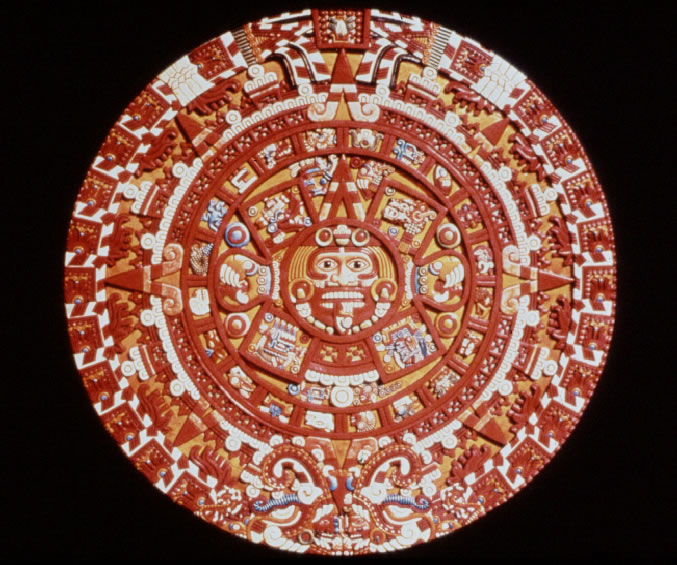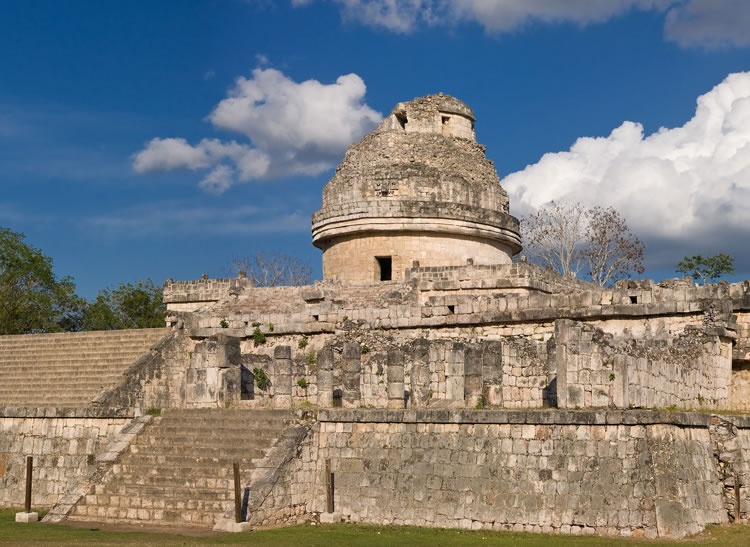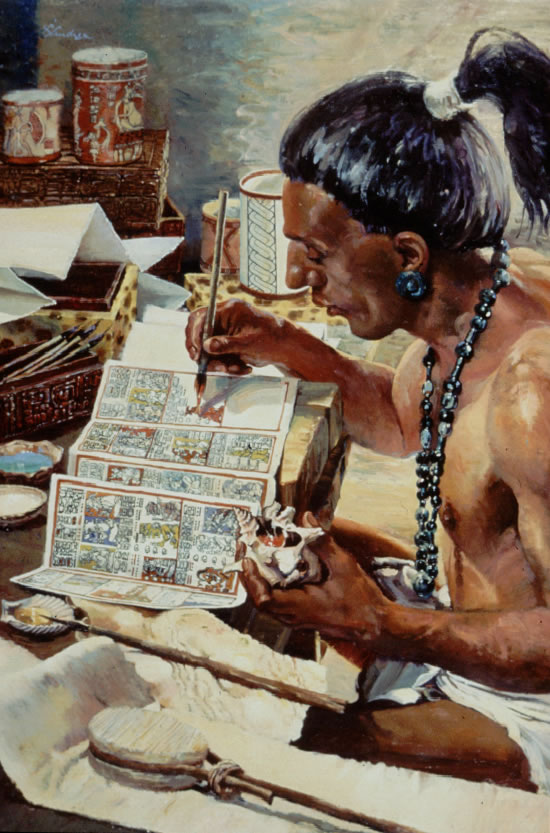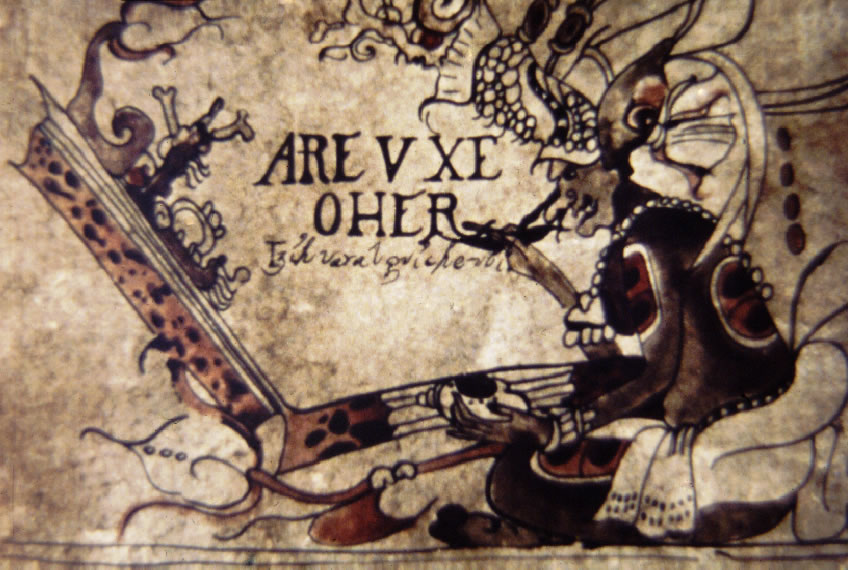The Maya: First People
DIGITAL EFFECT: The Maya
Crossfade the scene to the coordinates of Chichen Itza (20°40′58.44″N 88°34′7.14″W), on 2012/07/04, approximately 2 hours before sunrise, as a time when Venus is the Morning Star. The map marking the location of Chichen Itza is also on, as well as the realtime Venus.
VISUAL 22 (still): Map with Chichen Itza Marked
We travel south to Mexico.
VISUAL 23 (still): Aztec Calendar

Fade on a small image of the Aztec Calendar at the center of Mexico on the map, and then scale up and move the image off to the side for viewing.
Many people immediately think of Mexico when they see the Aztec calendar. It is a record of the Aztec creation story, as well as a complex 52-year calendar. Aztec astronomers could accurately predict solar eclipses.
We now visit the Maya, who developed a most sophisticated astronomy and a precise timekeeping system using the Sun, Moon, planets and stars. The Maya called themselves the “First People.”
VISUAL 24 (still): The Caracol at Chichen Itza

Fade on a small image of the view of the Caracol at Chichen Itza at the marked position on the map, and then scale up and move the image off to the side for viewing.
Fade off the map, the Aztec calendar, and the Caracol images.
This building might have been an observatory where Mayan astronomer-priests kept watchful vigil on the cycles of the Sun, Moon, and especially the planet Venus. The coiled shape gives the building its modern name “Caracol” which means “snail” in Spanish. We do not know the Mayan name for the structure.
Caracol has windows that line up with rising and setting positions along the horizon. Four of the most important directions match the extreme rising and setting points of Venus. Mayan astronomers were capable of predicting the position of Venus with great accuracy. In their daily lives, the people placed great importance on what part of the cycle Venus was in to decide what actions were necessary on any occasion.
Has anybody here seen Venus?
People have seen it at times in the morning when it is often called the “morning star,” or in the evening, when it is often called the “evening star.” It is often the brightest object in the sky other than the Sun or Moon.
DIGITAL EFFECT: Sunrise with Venus
Fade on the cardinal directions and a gold dot to mark the position of Venus. Fast forward to about 30 minutes before sunrise, with the atmosphere on and only Venus and the brightest stars visible in the sky.
Venus is visible above the eastern horizon.
It is almost dawn now.
Does anyone see Venus?
Give someone the pointer to point out Venus.
VISUAL 25 (still): Day Keeper Painting in Mayan Text
[Fade on image.]

Prior to European contact, the Maya recorded their knowledge of Venus. Here we see the Day Keeper writing a text to record the position of Venus, as well as the Sun and Moon. Using this book as a record of celestial events, Day Keepers measure time extremely accurately. They could predict the timing of Venus’s 584 day cycle to within two hours in five hundred years! When the Spaniards came, the invaders destroyed almost all these books, and they outlawed the Mayan language, both written and spoken.
VISUAL 26 (still): Day Keeper Writing in Latin.
[Fade on image.]

The Spaniards forced the Day Keepers to learn Latin. So this Day Keeper is writing in Latin instead of using his traditional glyphs and images, which were forbidden.
[Fade off the two Day Keeper images.]
The Day Keepers’ book is also an outline of the creation story, the Popol Vuh, which involves Venus, the Sun, and the Moon.
DIGITAL EFFECT: Popol Vuh
Fade off the atmosphere, set the realtime sky, but keep Venus and the cardinal directions on.
Turn off all lights and sound. Planetarium is dark and silent.
Either narrate or play a recording of the following story.

